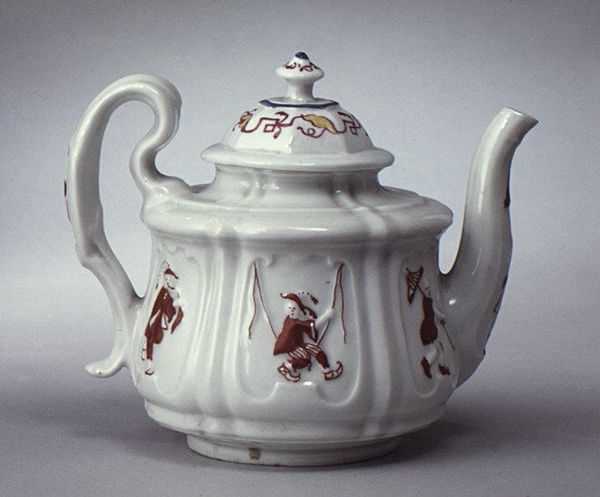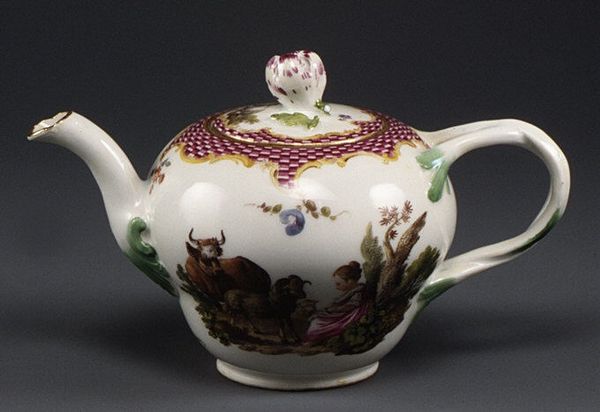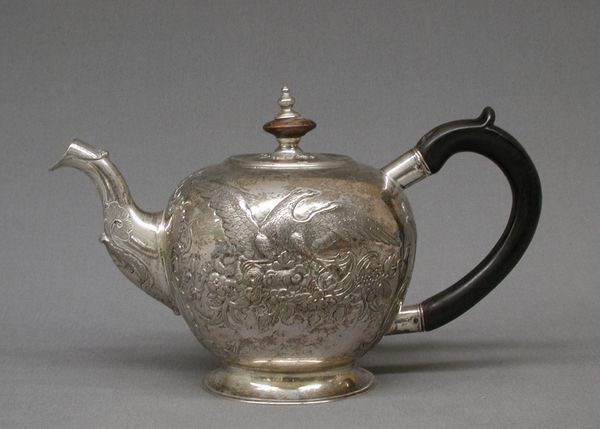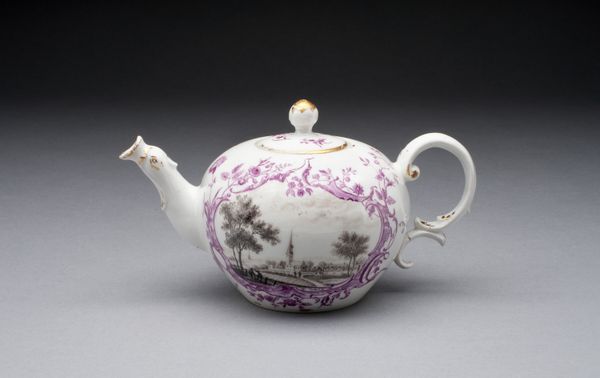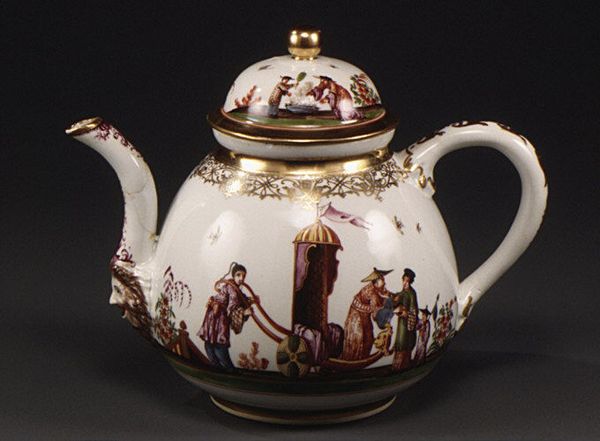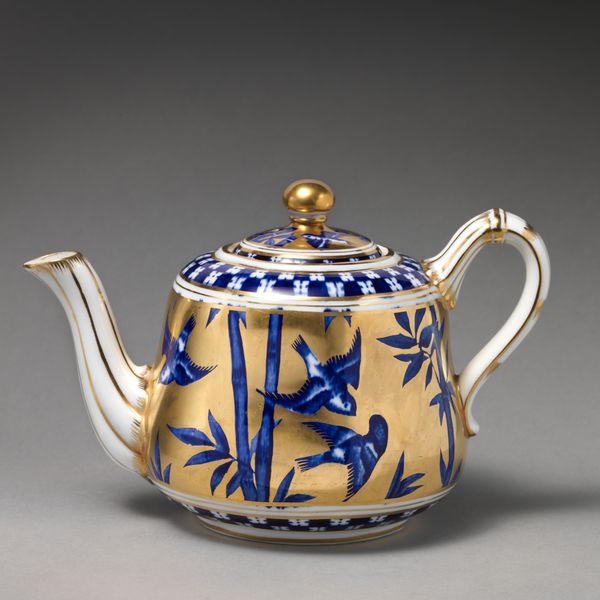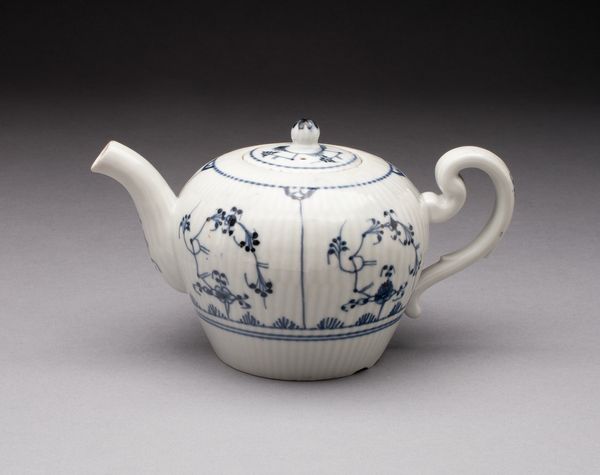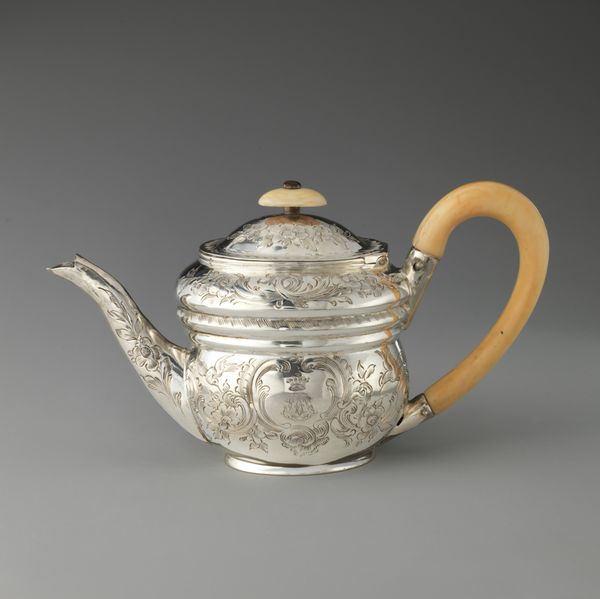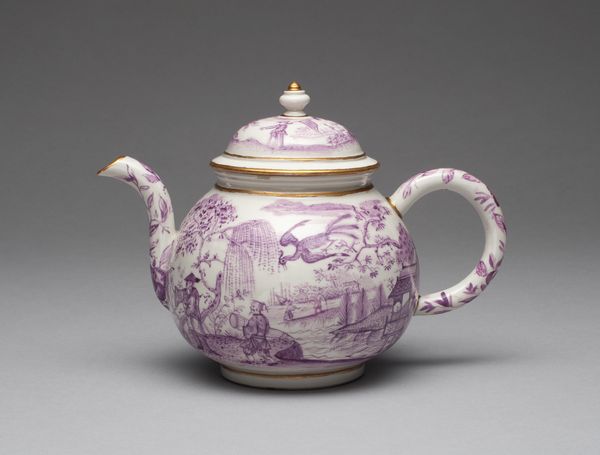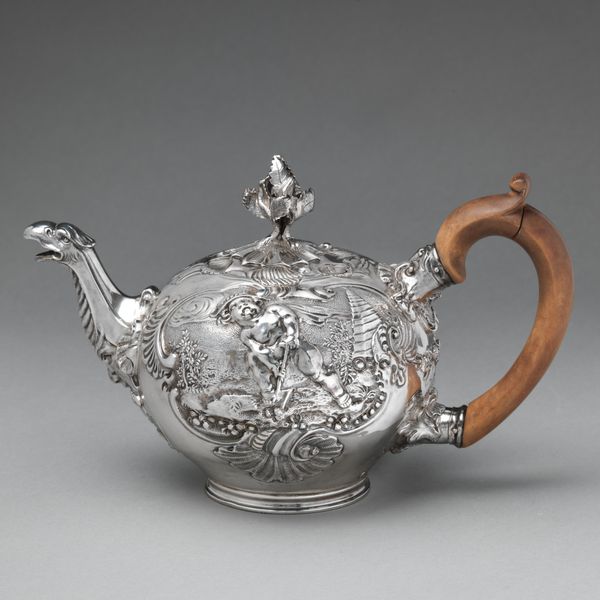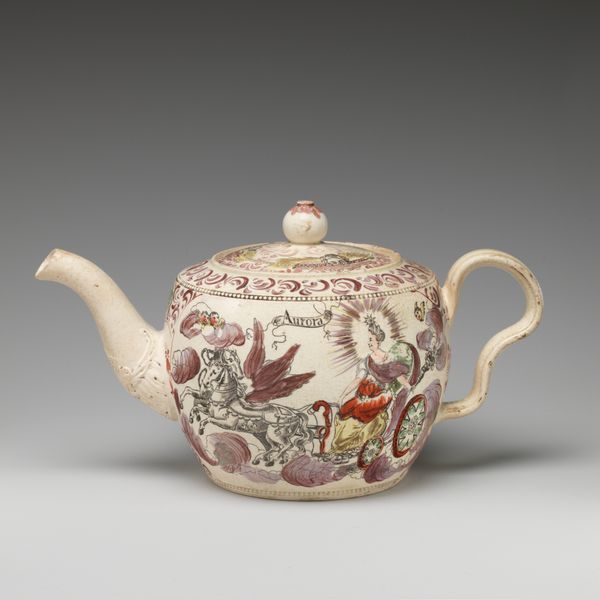
print, ceramic, porcelain, sculpture
# print
#
ceramic
#
porcelain
#
sculpture
#
decorative-art
#
rococo
Dimensions: Height (with cover): 5 1/4 in. (13.3 cm)
Copyright: Public Domain
This teapot was made in Delft, in the Netherlands, by Abraham Delfos, during the 18th century. The tin-glazed earthenware mimics Chinese porcelain, a valuable commodity at that time. The handle, spout, and rounded body of the teapot were individually molded and then assembled. A cream-colored glaze was applied to the surface, providing a blank canvas for decoration. Notice the detailed painting depicting classical figures, surrounded by wreaths. The delicacy of the painting suggests the hand of a skilled artisan, trained in the art of ceramic decoration. Gilding has been added to the knob and the rims. The production of Delftware like this was a complex process involving multiple stages, from shaping the clay to firing and decorating the finished product. Each step required specialized skills and knowledge, reflecting a highly organized system of labor. By understanding the processes involved in its creation, we can better appreciate the cultural and economic forces that shaped this exquisite object, and question the status of such ware as simply 'decorative'.
Comments
No comments
Be the first to comment and join the conversation on the ultimate creative platform.
